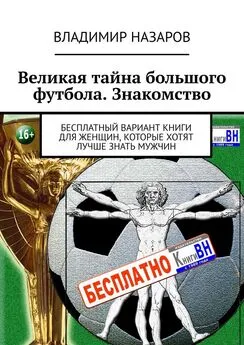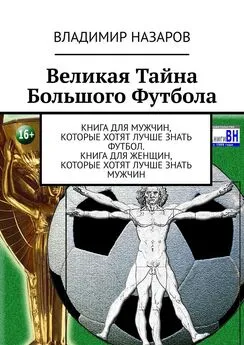Кристен Годси - Почему у женщин при социализме секс лучше [Аргументы в пользу экономической независимости] [litres]
- Название:Почему у женщин при социализме секс лучше [Аргументы в пользу экономической независимости] [litres]
- Автор:
- Жанр:
- Издательство:Литагент Альпина
- Год:2020
- Город:Москва
- ISBN:978-5-0013-9333-7
- Рейтинг:
- Избранное:Добавить в избранное
-
Отзывы:
-
Ваша оценка:
Кристен Годси - Почему у женщин при социализме секс лучше [Аргументы в пользу экономической независимости] [litres] краткое содержание
На множестве примеров Кристен Годси показывает, как, дискриминируя женщин, капитализм во всем обделяет их – от физических радостей до интеллектуальной самореализации – и использует в интересах процветания тех, кто уже находится на вершине экономической пирамиды.
Несмотря на крах и идейную дискредитацию социализма в странах Восточной Европы, Годси убеждена, что многие элементы социалистической экономики способны обеспечить женщине условия для развития и полноправного труда, здоровое распределение сил между работой и семьей и в конечном итоге гармоничные и насыщенные сексуальные отношения.
Почему у женщин при социализме секс лучше [Аргументы в пользу экономической независимости] [litres] - читать онлайн бесплатно ознакомительный отрывок
Интервал:
Закладка:
76
John R. Lott, “The New York Times Wants Us to Believe Communists Have Better Sex,” Fox News , Aug. 14, 2017, www.foxnews.com/opinion/2017/08/14/new-york-times-wants-us-to-believe-communists-have-better-sex.html.
77
Pew Research Center, Women and Leadership: Public Says Women Are Equally Qualified, but Barriers Persist , Jan. 14, 2015, www.pewsocialtrends.org/2015/01/14/women-and-leadership.
78
США; образ из национального гимна Соединенных Штатов Америки.
79
Все данные взяты с сайта Межпарламентского союза, www.ipu.org, в частности из базы данных о женщинах в политике: archive.ipu.org/wmn-e/classif.htm.
80
Данные о Соединенных Штатах: Catalyst, “Women the S&P 500 Companies,” www.catalyst.org/knowledge/women-sp-500-companies, данные о Скандинавии взяты из отчета Форума Гарвардской школы экономики по корпоративному управлению и финансовому регулированию: “Gender Parity on Boards Around the World,” Jan. 5, 2017, corpgov.law.harvard.edu/2017/01/05/gender-parity-on-boards-around-the-world; Nathan Hegedus, “In Sweden, Women Make Up 45 % of Parliament But Only 13 % of Corporate Leadership,” Quartz.com, Dec. 17, 2012, qz.com/37036/in-sweden-women-make-up-45-of-parliament-but-only-13-of-corporate-leadership; Cristina Zander, “Even Scandinavia Has a CEO Gender Gap,” Wall Street Journal , May 21, 2014, www.wsj.com/articles/how-sandvik-scania-are-addressing-the-ceo-gender-gap-1400712884.
81
Ghodsee, “Pressuring the Politburo: The Committee of the Bulgarian Women’s Movement and State Socialist Feminism,” Slavic Review 73, no. 3 (2014): 538–562.
82
Мэри Уолстонкрафт (1759−1797) – британская писательница и феминистка, жена предтечи анархистского движения Уильяма Годвина и мать писательницы Мэри Шелли.
83
Джон Стюарт Милль (1806−1873) – британский философ, социолог, экономист и политик, один из основоположников философии либерализма.
84
Clare Goldberg Moses, “Equality and Difference in Historical Perspective: A Comparative Examination of the Feminisms of the French Revolutionaries and the Utopian Socialists,” in Rebel Daughters: Women and the French Revolution , edited by Sara Melzer and Leslie Rabine (New York: Oxford University Press, 1992), 231–253.
85
L. Goldstein, “Early Feminist Themes in French Utopian Socialism: The St.-Simonians and Fourier,” Journal of the History of Ideas 43, no. 1 (1982); “Degradation of Women in Civilization,” Théorie des Quatre Mouvements et des Destinées Générales ( The Theory of the Four Movements and of the General Destinies ), 3rd ed. (originally published in 1808, this ed. 1841–1848, reprinted in Women, the Family, and Freedom: The Debate in Documents, Volume One, 1750–1880 , edited by Susan Groag Bell and Karen M. Offen (Stanford, CA: Stanford University Press, 1983), 40–41.
86
S. Joan Moon, “Feminism and Socialism: The Utopian Synthesis of Flora Tristan,” in Socialist Women: European Socialist Feminism in the Nineteenth and Early Twentieth Centuries , edited by Marilyn J. Boxer and Jean H. Quataert (New York: Elsevier, 1978).
87
Friedrich Engels, The Origin of the Family, Private Property, and the State , 1884, www.marxists.org/archive/marx/works/1884/origin-family/ch02c.htm.
88
Engels, The Origin of the Family .
89
См. также: Rochelle Ruthchild, Equality and Revolution: Women’s Rights in the Russian Empire 1905–1917 (Pittsburgh: University of Pittsburgh Press, 2010), 235, and Rochelle Ruthchild, “‘Going to the Ballot Box Is a Moral Duty for Every Woman’: The Great War and Women’s Rights in Russia,” in Russia’s Home Front in War & Revolution, 1914–22, Book 2: The Experience of War and Revolution , edited by Adele Lindenmeyr, Christopher Read, and Peter Waldron (Bloomington, IN: Slavica, 2018), 1–38.
90
Louise Bryant, “Mirrors on Moscow,” 1923, www.marxists.org/archive/bryant/works/1923-mom/kollontai.htm.
91
R. C. Elwood, Inessa Armand: Revolutionary and Feminist (New York: Cambridge University Press, 2002); Robert McNeal, Bride of the Revolution: Krupskaya and Lenin (Ann Arbor: University of Michigan Press, 1972); Cathy Porter, Alexandra Kollontai: A Biography (Chicago: Haymarket Books, 2014). О русской кампании по распространению грамотности см.: Ben Eklof, “Russian Literacy Campaigns 1861–1939,” in National Literacy Campaigns and Movements: Historical and Comparative Perspectives , edited by Robert F. Arnove and Harvey J. Graff (New Brunswick, NJ: Transaction Publishers, 2008), 128–129; Helen McCarthy and James Southern, “Women, Gender, and Diplomacy: A Historical Survey,” in Gender and Diplomacy , edited by Jennifer Cassidy (New York: Routledge, 2017), 15–31, 24.
92
Anna Krylova, Soviet Women in Combat: A History of Violence on the Eastern Front (New York: Cambridge University Press, 2011).
93
Mateja Jeraj, “Vida Tomšič,” in A Biographical Dictionary of Women’s Movements and Feminisms: Central, Eastern and South-Eastern Europe, 19th and 20th Centuries , edited by Francisca de Haan, Krasimira Daskalova, and Anna Loutfi (Budapest: Central European University Press, 2006), 575–579; Chiara Bonfigioli, “Revolutionary Networks: Women’s Political and Social Activism in Cold War Italy and Yugoslavia (1945–1957),” PhD diss., University of Utrecht, 2012.
94
Kristen Ghodsee, “The Left Side of History: The Legacy of Bulgaria’s Elena Lagadinova,” Foreign Affairs , April 29, 2015, www.foreignaffairs.com/articles/bulgaria/2015-04-29/left-side-history; Kristen Ghodsee, The Left Side of History: World War II and the Unfulfilled Promise of Communism in Eastern Europe (Durham, NC: Duke University Press, 2015); Krassimira Daskalova, “A Woman Politician in the Cold War Balkans: From Biography to History,” Aspasia: The International Yearbook of Central, Eastern, and Southeastern European Women’s and Gender History 10 (2016); and John D. Bell, The Bulgarian Communist Party from Blagoev to Zhivkov (Stanford, CA: Hoover Institution Press, 1985).
95
“A Girl Who Hated Cream Puffs,” Time , Sept. 20, 1948, 33; W. H. Lawrence, “Aunty Ana,” New York Times , Feb. 29, 1948; Robert Levy, Ana Pauker: The Rise and Fall of a Jewish Communist (Berkeley: University of California Press, 2001); Valentina Tereshkova, Valentina Tereshkova, The First Lady of Space: In Her Own Words , Spacebusiness.com, 2015.
96
Michael Parks, “Profile: Galina Semyonova: No Mere Token in Soviet Politburo,” Los Angeles Times , Jan. 15, 1991, articles.latimes.com/1991-01-15/news/wr-327_1_soviet-union; Leonid Lipilin, “Woman of Action,” Soviet Life (March 1991): 22–23; Bill Keller, “A Soviet Woman’s Point of View,” New York Times , Jan. 24, 1989, www.nytimes.com/1989/01/24/world/a-soviet-woman-s-point-of-view.html.
97
. Women in the Politics of Postcommunist Eastern Europe , edited by Marilyn Rueschemeyer (Armonk, NY: M. E. Sharpe, 1998); Marilyn Rueschemeyer and Sharon Wolchik, editors, Women in Power in Post-Communist Parliaments (Bloomington: Indiana University Press, 2009 ); The World’s Women 1970–1990: Trends and Statistics , United Nations, 1991; Kerin Hope, “Bulgaria Builds on Legacy of Female Engineering Elite,” Financial Times , March 9, 2018, www.ft.com/content/e2fdfe6e-0513-11e8-9e12-af73e8db3c71; Peter Lentini, “Statistical Data on Women in the USSR,” Lorton Paper #10, 1994.
98
Susan Wellford, “A Quota Worth Making,” U. S. News and World Report , Feb. 21, 2017, www.usnews.com/opinion/civil-wars/articles/2017-02-21/the-us-should-consider-gender-quotas-to-increase-women-in-politics.
99
Квоты не только способствуют гендерному разнообразию, но и в целом увеличивают выбор квалифицированных кандидатов. Имеются некоторые свидетельства того, что корпорации с более разнообразным составом совета директоров более прибыльны. Marcus Noland, Tyler Moran, and Barbara Kotschwar, “Is Gender Diversity Profi able? Evidence from a Global Survey,” Working Paper Series of the Peterson Institute for International Economics, Feb. 2016; Margarethe Weirsema and Marie Louise Mors, “What Board Directors Really Think of Gender Quotas,” Harvard Business Review , Nov. 14, 2016; Oliver Staley, “You Know Those Quotas for Female Board Members in Europe? They’re Working,” Quartz.com, May 3, 2016, qz.com/674276/you-know-those-quotas-for-female-board-members-in-europe-theyre-working; and Daniel Boffey, “EU to Push for 40 % Quota for Women on Company Boards,” Guardian (London), Nov. 20, 2017, www.theguardian.com/world/2017/nov/20/eu-to-push-for-40-quota-for-women-on-company-boards.
100
Pew Research Center, Women and Leadership: Public Says Women Are Equally Qualified, but Barriers Persist , Jan. 14, 2015, www.pewsocialtrends.org/2015/01/14/women-and-leadership.
101
The Rockefeller Foundation, “Women in Leadership: Why It Matters,” May 12, 2016, www.rockefellerfoundation.org/report/women-in-leadership-why-it-matters, and KPMG, “KPMG Women’s Leadership Study,” Sept. 13, 2016, home.kpmg.com/ph/en/home/insights/2016/09/kpmg-women-s-leadership-study.html.
102
“A Girl Who Hated Cream Puffs,” 33.
103
Slavenka Drakulić, How We Survived Communism and Even Laughed (New York: Harper Perennial, 1993), 31.
104
Roy Baumeister and Kathleen Vohs, “Sexual Economics: Sex as Female Resource for Social Exchange in Heterosexual Interactions,” Personality and Social Psychology Review 8, no. 4 (2004): 339–363.
105
Roy Baumeister, Tania Reynolds, Bo Winegard, and Kathleen Vohs, “Competing for Love: Applying Sexual Economics Theory to Mating Contests.” Journal of Economic Psychology 63 (Dec. 2017): 230–241.
106
Baumeister et al., “Competing for Love.”
107
См., напр.: Laurie A. Rudman, “Myths of Sexual Economics Theory: Implications for Gender Equality,” Psychology of Women Quarterly 4, no. 3 (2017): 299–313.
Читать дальшеИнтервал:
Закладка:
![Обложка книги Кристен Годси - Почему у женщин при социализме секс лучше [Аргументы в пользу экономической независимости] [litres]](/books/1065271/kristen-godsi-pochemu-u-zhenchin-pri-socializme-seks.webp)


![Дженнифер Лэнг - Секс без риска [Вопросы о сексе, которые стрёмно обсуждать с родителями и даже с друзьями] [litres]](/books/1061604/dzhennifer-leng-seks-bez-riska-voprosy-o-sekse-ko.webp)
![Люкс Альптраум - Притворство [Почему женщины лгут о сексе и какая правда за этим скрывается] [litres]](/books/1065778/lyuks-alptraum-pritvorstvo-pochemu-zhenchiny-lgut-o.webp)
![Светлана Шишкина - Любить. Считать [Как построить крепкие и здоровые отношения на основе финансовой независимости] [litres]](/books/1067622/svetlana-shishkina-lyubit-schitat-kak-postroit-kr.webp)




